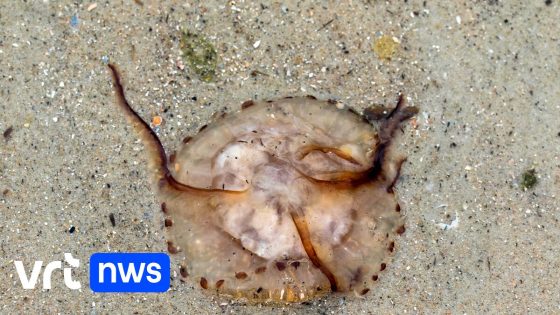Beachgoers along the Belgian coast have recently encountered a surge in jellyfish stings, prompting attention from local rescuers and first aid stations. On 2025-07-02 19:14:00, reports confirmed that around 50 people were treated for jellyfish stings, mainly in shallow waters.
- Redders verzorgden 50 mensen voor kwallenbeten
- Kwallenbeten zijn vervelend, maar niet gevaarlijk
- Kompasskwal vermoedelijk verantwoordelijk voor beten
- Wind veroorzaakte veel kwallen in ondiep water
- Aantal kwallen neemt komende dagen af
The primary culprit appears to be the compass jellyfish, which has been more prevalent due to recent wind conditions stirring up the coastal waters. While these stings can cause discomfort, they are generally not dangerous to swimmers or beach visitors.
With this spike in jellyfish encounters, many may wonder how long these nuisances will persist and what precautions to take. The good News is that fewer jellyfish are expected in the coming days, offering some relief to those enjoying Belgium’s beaches.
Why have jellyfish become more common recently, and should beachgoers be concerned? The increase is linked to wind patterns pushing jellyfish into shallow areas, but the stings remain mostly harmless. Key points to consider include:
- Compass jellyfish are the main species involved, known for mild but irritating stings.
- Wind direction greatly influences jellyfish concentrations near the shore.
- First aid stations are well-prepared to assist those affected quickly.
- The jellyfish presence is temporary, with numbers expected to drop soon.
As the jellyfish situation improves, beach lovers can look forward to safer and more comfortable swims. Staying informed and following local advice will help everyone enjoy the Belgian coast this summer without worry.

































